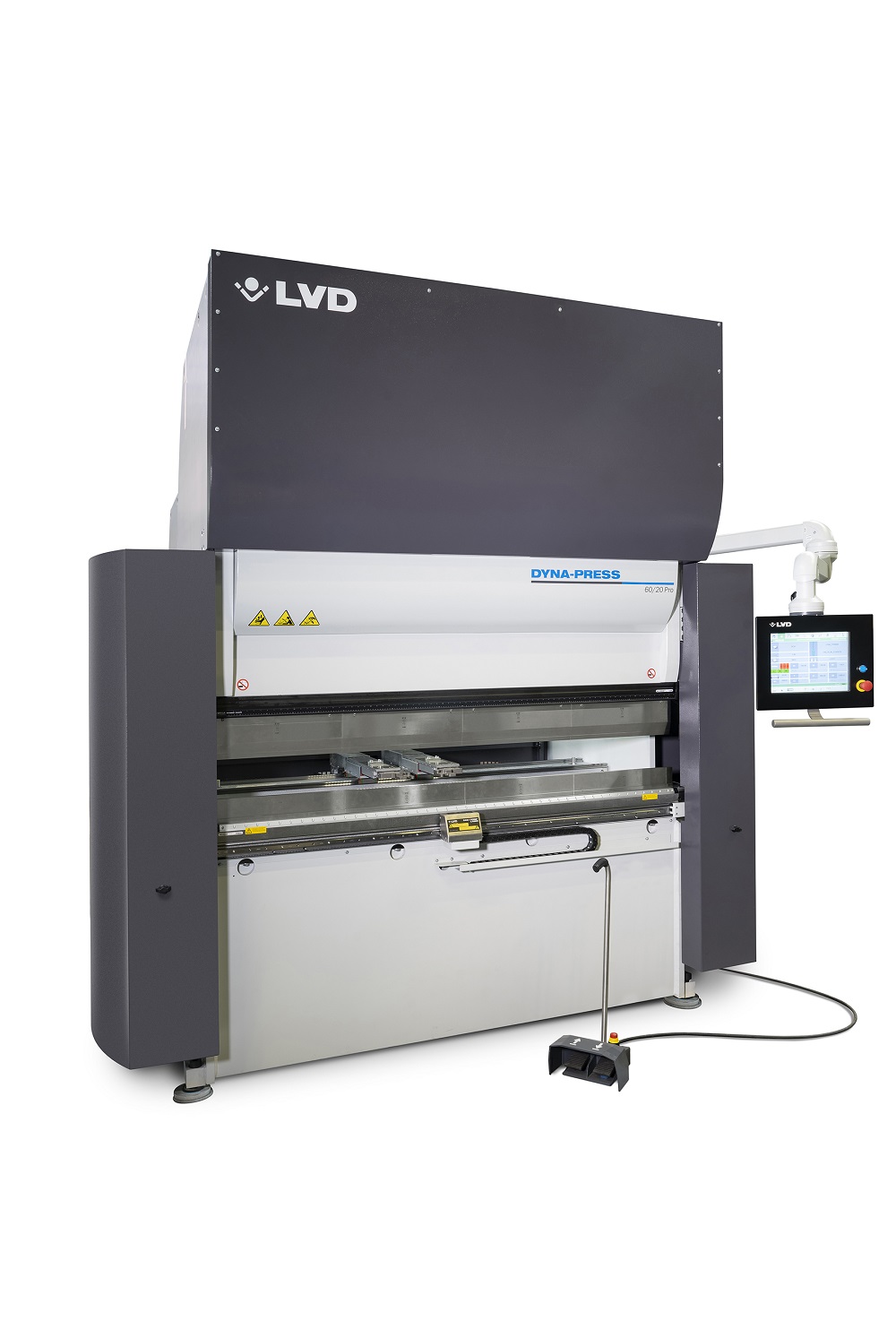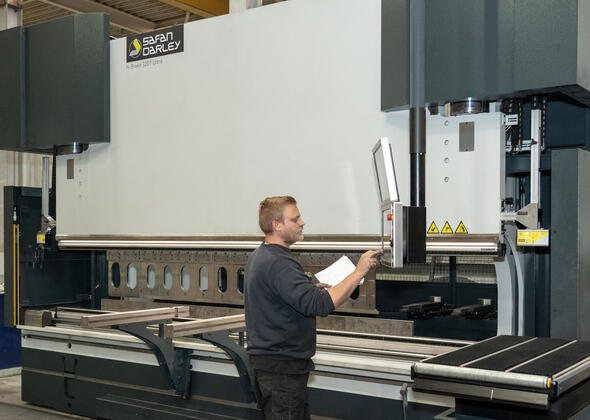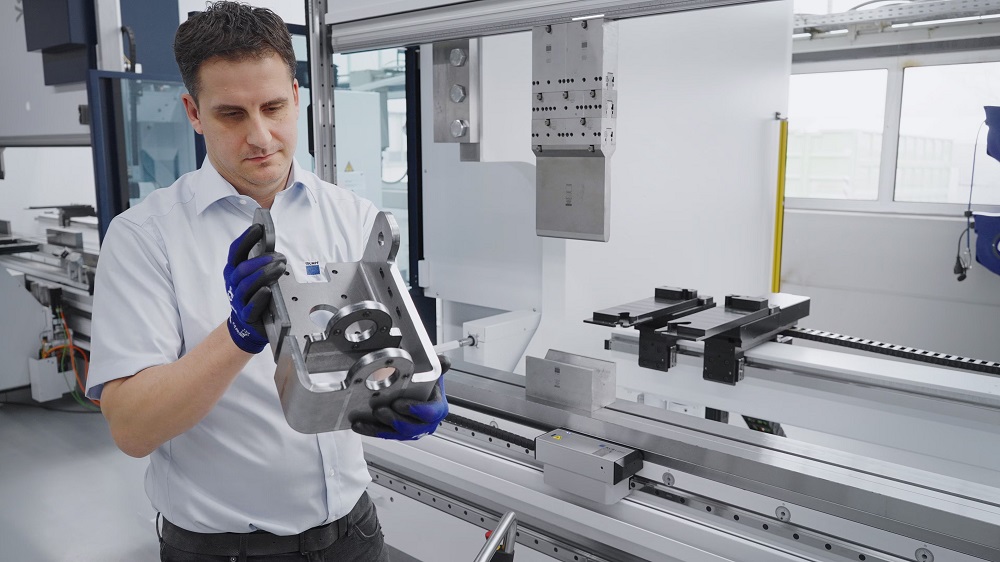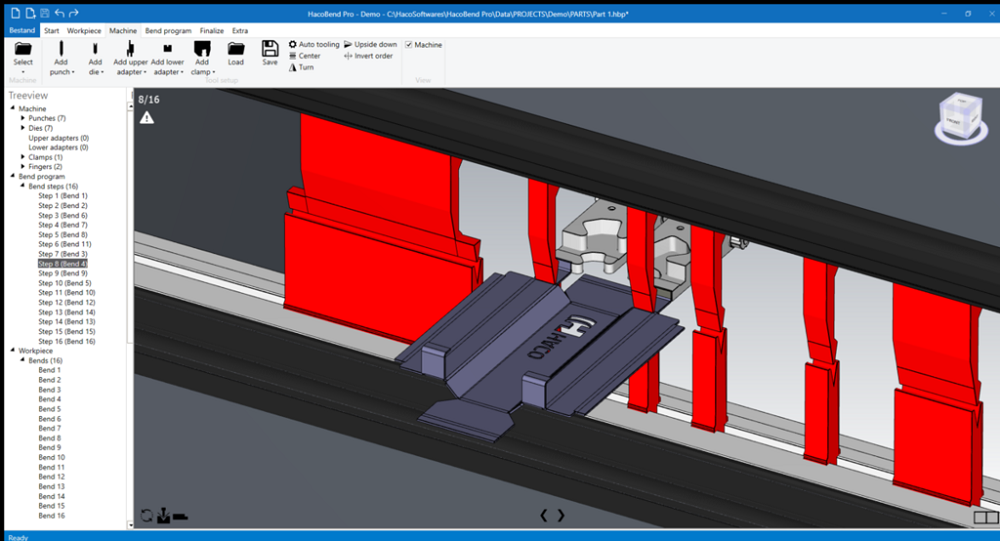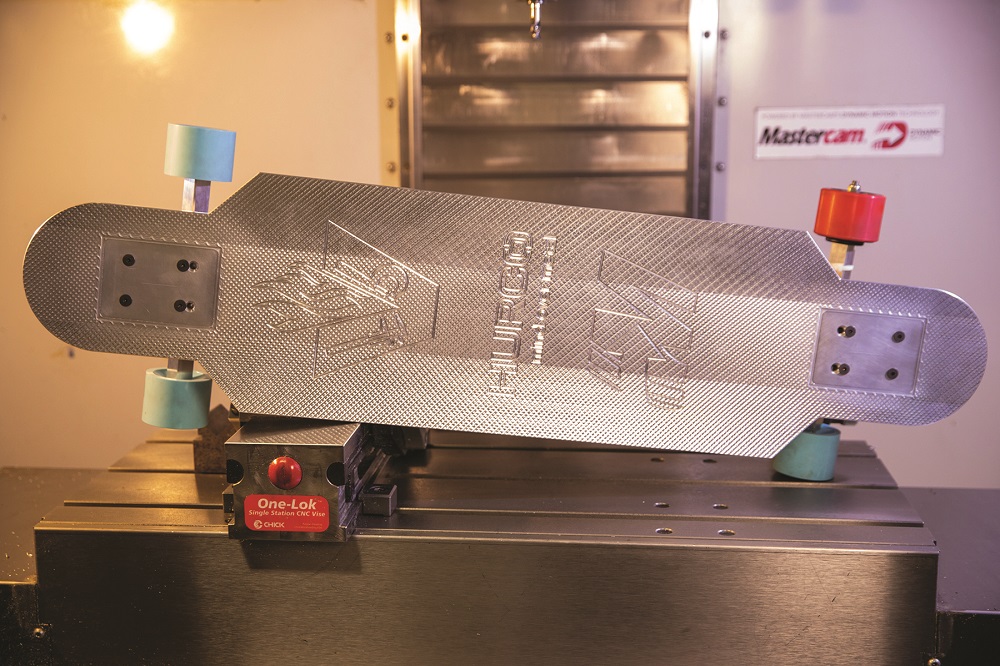The new LVD Dyna-Press 60/20 high-speed electric-drive press brakeprovides 2 m of working length and a five-axis back-gauge to handle a wide range of applications at bending speeds up to 25 mm/s. A 60/20 Pro model is further equipped with LVD’s Easy-Form laser system for greater control of the bending process to achieve high output at a high level of quality. The Pro model also offers an optional custom-made crowning system.
Dyna-Press press brakes consume low amounts of electricity and deliver fast cycle times to bend more parts per minute, more efficiently, at a lower cost per part. A streamlined design uses two heavy-duty ball screws to drive the force transmission from the servomotors to the pressing force of the ram. Fewer components means less maintenance.
Operators can use the machine for air bending, coining, hemming and bottoming. Furthermore, Dyna-Press 60/20 offers flexibility in tooling, accepting universal, Wila or US style-punches and universal, LVD or US style-dies. The Pro version offers pneumatic Wila clamping for the European market and hydraulic clamping for the US market.
LVD’s 60/20 Pro is available with a crowning system custom-made for each machine, distributing the appropriate force to ensure the bend angle remains consistent over the full length of the part. Like all Dyna-Press models, LVD says that the 60/20 is easy to operate with minimal training. The 15-inch Touch-B touchscreen control features an intuitive graphical display. Operators can create 2D designs and simulate in 3D on the screen, while the controller is compatible with LVD’s CAM software, CADMAN-B.
Dyna-Press press brakes are available in 24, 40 and 60 tons.
For further information www.lvdgroup.com






